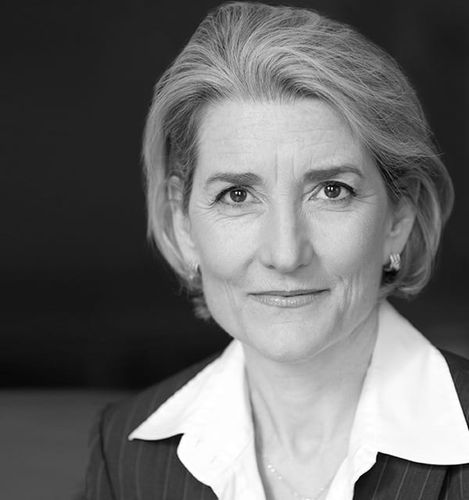Interview Amy Edmondson : “Psychological safety is not about happiness at work, but dignity.“
Why should everyone in a company be aware of "psychological safety"? How do you explain to a company that a culture of fear cannot work anymore? At a time where one of the main focus is to develop happiness at work, Amy Edmondson, Professor at the Harvard University, insists on the fact that employees have to seek for dignity rather than happiness. And that's everybody's business, not only the CEO's.

In the introduction of your book The Fearless Organization, you write: “no 21st century organization can afford to have a culture of fear”. So, the old way is an expensive way? How come?
A culture of fear is indeed expensive – so long as your organization is operating in an uncertain, complex, or fast-moving market environment, where knowledge, ingenuity, and innovation are vital to long-term survival. This is because fear silences all but the most confident voices (rarely the smartest or most observant), and small signals of impending risks are thus discounted or ignored.
Unless its culture is characterized by psychological safety – meaning employees believe they can speak up, raise concerns, and deliver bad news without fear of retribution—a company is at risk of serious, and unnecessary, business failures, and equally at risk of failing to innovate. Fear works fine in motivating the most predictable, certain, routine, individually identifiable tasks. But for the rest, fear’s costs are too high for any savvy manager today to use it as a tool.
How do you make “psychological safety” possible in an organization? What are the first steps?
Leaders – at any level of an organization – need to do three things to foster psychological safety. It starts with setting the stage – getting people on the same page in terms of their appreciation of the complexity, uncertainty, and interdependence that is inherent in the work that lies ahead. Put simply, this helps create the logical rationale for voice. It makes the case that people need to be alert, candid and aware to manage the risks and complexities of the work.
Second, they must be proactive in inviting input. You can set the context effectively, but people still need an invitation to speak, most of the time, especially in a hierarchy. This is nothing extraordinary; I’m simply talking about asking questions. Thoughtful questions – those that give people room to think and respond about key issues in the workplace – provide a remarkable opportunity for people’s voices to be heard.
Third, leaders must train themselves to respond productively to good and bad news alike. Good news is easy, of course, yet it is important not to over-reward good news that reflects luck as much as effort, for fear of signaling that only good news is welcome. And bad news is where taking the moment to breathe deeply before saying something productive like, “thank you for that clear line of sight,” which goes a long way toward building an environment of psychological safety. These three categories of leadership behavior are ones that must be practiced in an ongoing way to build the culture that allows 21st century organizations to thrive.
'Fear works fine in motivating the most predictable, certain, routine, individually identifiable tasks. But for the rest, fear’s costs are too high for any savvy manager today to use it as a tool.'
Being able to “speak up” is crucial you say- as this is the key to sharing knowledge and promote teamwork. How can we create an environment that will allow this dialogue? Whose responsibility is it? Leaders’, managers’, or pretty much everyone’s?
As noted above, this is a leadership task. However, that doesn’t mean only people at the top. Leadership – quite literally the function of encouraging others to act – can be exercised by CEOs and front-line supervisors alike. Although the responsibilities differ across levels of the organization, exercising leadership to build a speak up culture is everyone’s responsibility. Yet it is those at the very top who have the greatest opportunity to demonstrate that these behaviors are rewarded.
Do you have a perfect example of an organization that took psychological safety into consideration, and flourished?
There are few perfect examples of anything in life, or in research, but a few come close. Toyota, with its extraordinary production system, has built in mechanisms for front line associates, and others, to alert people to problems, and even just potential problems, more fully than any other manufacturing system I know. It’s well worth studying the details of how they’ve done this, and what the rewards have been. Similarly, I’ve written about companies ranging from innovation consultancy IDEO to Minneapolis Childrens hospital to Pixar that have taken psychosocial safety seriously and flourished as a result.
Discover USI 2019 full program
Does “Psychological Safety” connect with the concept of “happiness at work”? Last year, we received the French philosopher Julia de Funès, and she was quite skeptical towards this concept of “happiness at work”. She was taking examples such as endless workshops, playing with legos or having table soccers at the office... and said all this tended to infantilize people and create conformism rather than unleashing creativity. What do you think?
I think it’s more accurate to say that Psychological Safety connects with the concept of dignity at work, rather than happiness. But, on average, most of us will be far happier in a workplace where we have dignity and truly believe that our voice is welcome.
How do you embark everyone on the path of “psychological safety”? And more specifically those who don’t like change or see the necessity of it? There must be resistance sometimes..."
The answer to this question starts with recognizing that psychological safety is not in fact the right goal. It’s the means to a goal. Psychological safety removes barriers to such mission critical activities as innovation, improvement, or risk management. Therefore, I don’t think the path upon which to embark should be called psychological safety. The path should be called “achieving the mission” or achieving excellence. Then, as described in my answer to question 2, you start by helping people understand the kind of culture and behaviors that will be needed to achieve excellence – in a fast-changing, complex, and interdependent world. That is, you start by pointing attention to the remarkable ways in which things could go wrong without all of us working together – attentively, energetically, and openly speaking up about what we see, suspect, wonder, and worry about. The journey starts when people recognize just how valuable their contributions are to the shared mission.
Read our latest interview of Robert Plomin -Speaker USI 2019: "The DNA Revolution Is Unstoppable".

